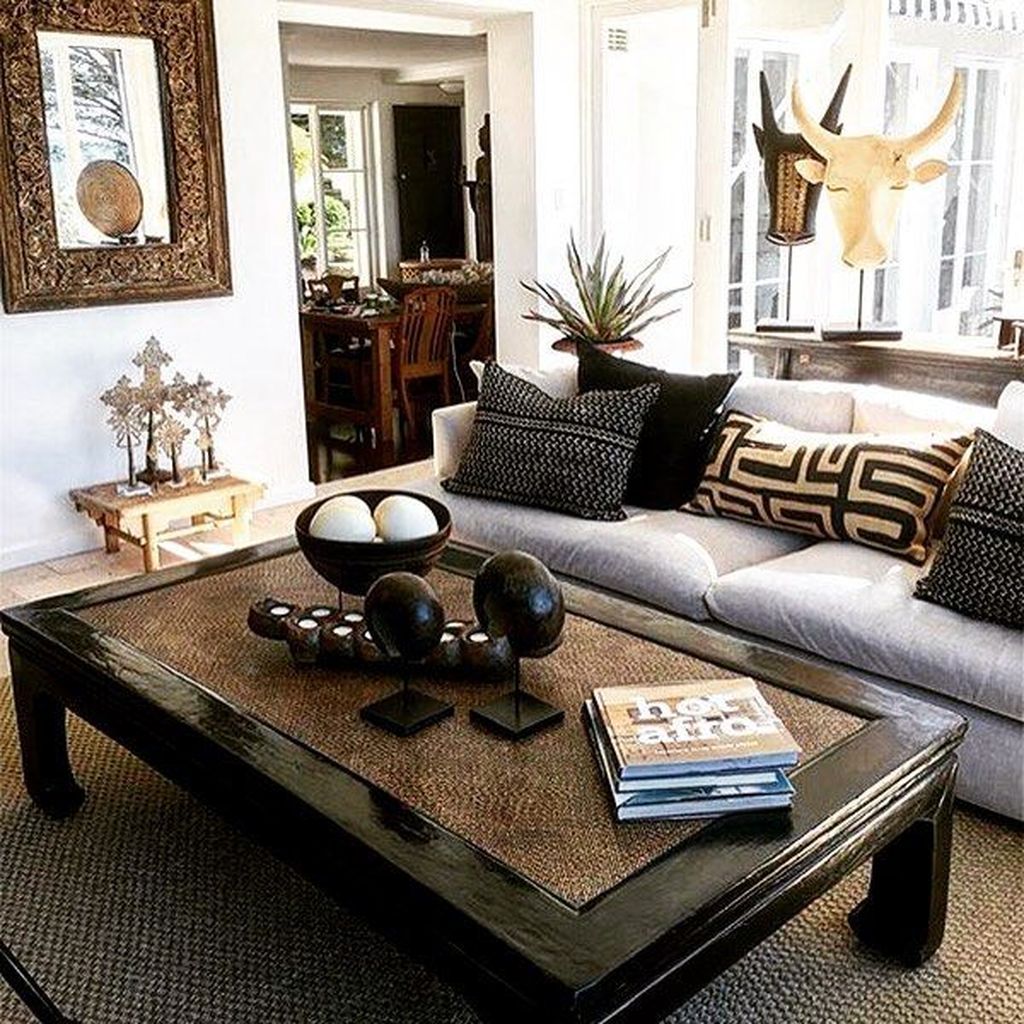Let’s dive into the enchanting world of African style interior design! This design style pays tribute to the vibrant and diverse cultures of the African continent, bringing a touch of warmth, color, and natural beauty into your home. It’s about embracing organic textures, bold hues, and traditional patterns to create a space that’s both stylish and soulful. Get ready to explore how you can incorporate the spirit of Africa into your living spaces and make your home feel like a celebration of the continent’s rich heritage.
African Style Interior Design: Bringing the Heart of Africa Home
Imagine stepping into a room that feels like a warm embrace, filled with colors that pop like a sunset over the savanna and textures that whisper stories of ancient traditions. That’s the magic of African style interior design—it’s not just about decorating, it’s about capturing the soul of a continent.
African interior design represents a harmonious fusion of tradition and modernity. It beautifully intertwines indigenous elements and contemporary aesthetics to create captivating and historically rich spaces. Imagine rough-hewn wooden masks displayed alongside sleek, modern furniture or vibrant textiles draped over minimalist sofas. It’s all about finding that sweet spot where old meets new, where the stories of the past enhance the dynamism of the present.
This design philosophy isn’t just about aesthetics; it’s about embracing a way of life. It’s about connecting with the earth, celebrating cultural heritage, and creating spaces that nourish the soul. It’s about understanding that true beauty comes from authenticity, from honoring the stories embedded in every object, every color, every pattern.
Color: Think Sunshine and Spice
Forget bland walls and boring beige! African design is all about embracing rich, earthy tones that instantly warm up a space. Think deep oranges like the setting sun, browns as rich as fertile soil, and golden yellows that radiate warmth. These colors are like a hug for your home, creating a sense of comfort and belonging.
Natural Materials: Bringing the Outdoors In
One of the best things about African design is its connection to nature. Wood isn’t just for furniture—it can be used on walls, ceilings, and even floors to bring in an organic feel. Think hand-carved wooden masks, woven baskets, and furniture made from sustainably sourced timber. These pieces add a sense of history and authenticity to your space, reminding us of the beauty of the natural world.
Textiles: A Celebration of Patterns and Craftsmanship
African textiles are like works of art, each one telling a story through intricate patterns and vibrant colors. Imagine cushions covered in boldly patterned kente cloth, throws woven with intricate designs, or even a statement rug with a geometric motif. These textiles add visual interest and tell a story, making your home feel truly unique.
Don’t Forget the Details: Accessories that Speak Volumes
Here’s where you can really have fun! Think hand-painted pottery, colorful beaded curtains, and intricately carved wooden sculptures. These details add personality and charm, turning your home from a space into a sanctuary that reflects your personal style.
Plants: Bringing Life and Lushness to Your Oasis
What’s an African-inspired space without a touch of greenery? Lush plants like snake plants, ZZ plants, and peace lilies thrive in indirect light and add a sense of tranquility to your home. Imagine placing a tall fiddle-leaf fig in the corner or creating a small oasis of succulents on a sunny windowsill. These green accents will make your space feel even more alive and inviting.
African style interior design is more than just a trend—it’s a celebration of culture, craftsmanship, and a deep connection to nature. By incorporating these elements into your home, you can create a space that is not only visually stunning but also filled with warmth, history, and a touch of African magic.
What Defines Authentic African Style Interior Design?
We’ve talked about some of the elements of African design, but what really makes it tick? What makes it truly authentic? It’s more than just a trendy look – it’s about capturing the spirit of Africa in your home. Think of it as a vibrant conversation between the past and the present, where age-old traditions meet modern ideas.
Think Natural, Think Textures
Imagine stepping into a space that feels like an extension of the African landscape. Natural materials are key here – think warm woods, rough-hewn stone, and woven textiles. These elements don’t just look good; they bring in a sense of the outdoors, adding layers of texture and warmth you can almost feel. And because African design is deeply connected to the environment, you’ll often find a focus on sustainability and eco-friendly materials.
A Celebration of Culture in Every Corner
Africa is a continent bursting with diverse cultures, and its design reflects this beautiful tapestry. Each region, each ethnic group, brings its own unique flavor to the mix. You might see bold geometric patterns inspired by traditional textiles, intricate carvings that have been passed down through generations, or a vibrant color palette that reflects the warmth of the African sun. It’s about incorporating these cultural expressions in a way that feels authentic and celebrates the continent’s rich heritage.
More Than Just a Look – It’s a Feeling
Authentic African interior design goes beyond just the visual. It’s about creating a space that tells a story, evokes emotions, and makes you feel something. Imagine relaxing in a room that makes you feel grounded, connected to nature, and surrounded by the warmth of African hospitality. It’s about embracing the spirit of Africa – its history, its people, and its future – and bringing that energy into your home.
Exploring Key Elements of African Style Interior Design: Materials
Stepping into an African-inspired room is like stepping into a world of natural beauty and vibrant culture. It’s not just about the look, it’s about the feel. Imagine running your hand across a rough-hewn wooden table, the warmth radiating up into your palm. That’s the magic of African design – it’s all about connecting with the earth through the materials it embraces.
Think sisal rugs grounding a room with their earthy texture, bamboo shades casting intricate patterns of light and shadow, and sturdy wooden furniture whispering stories of ancient craftsmanship. These materials aren’t just beautiful, they’re sustainable and long-lasting, bringing a sense of history and permanence to your home.
But it’s not just about simplicity. African design is also about celebrating life through vibrant color and bold patterns. Imagine deep, rich oranges and yellows reminiscent of fiery sunsets over the savanna, contrasted with cool, earthy browns and greens that echo the fertile land. These colors aren’t just painted on, they’re woven into intricately patterned textiles, each one telling a story passed down through generations. Picture throw pillows with geometric designs inspired by ancient tribal art, or curtains adorned with motifs that celebrate the animal kingdom.
And speaking of art, no African-inspired space is complete without it! Imagine a striking wooden mask hanging on the wall, its weathered features holding centuries of wisdom. Or a collection of hand-carved sculptures, each one a testament to the creativity and skill of African artisans. These pieces aren’t just decorations, they’re conversation starters, bridges to a rich cultural heritage that deserves to be celebrated.
Let’s recap the key ingredients to bring the spirit of Africa into your home:
Element Description
Natural Materials Embrace natural materials like sisal, bamboo, wood, and clay for a warm, inviting, and eco-friendly ambiance.
Vibrant Colors Infuse your space with energy using earthy tones like sunset oranges, deep browns, and vibrant yellows.
Intricate Patterns Incorporate textiles and décor with geometric or nature-inspired patterns for a touch of cultural storytelling.
Art & Sculpture Showcase African masks, sculptures, and paintings to add character, meaning, and celebrate cultural heritage.
Colors & Patterns: The Language of African Design
We’ve talked about the heart and soul of African-inspired interiors, but now let’s dive into what truly brings these spaces to life: the colors and patterns. Imagine the warmth of the African sun, the richness of the earth, and the vibrancy of the people – that’s the kind of energy these elements bring to a room.
Think warm reds and oranges like glowing sunsets, deep blues reminiscent of twilight skies, and earthy browns and yellows that ground the space like the African soil itself. But it’s not just about single shades – it’s about the way these colors blend and pop alongside each other, creating a visual feast for the eyes.
Of course, no African-inspired interior is complete without its patterns. These aren’t just designs, they’re stories woven into fabric. Traditional patterns, like the intricate Kuba cloth, the mesmerizing swirls of batik, the earthy simplicity of mud cloth, and the bold statements of wax print fabric, each carry a piece of African history and heritage. They add a depth and complexity to a room, turning walls and furniture into works of art.
Imagine a Kuba cloth cushion on a deep blue couch, or a vibrant batik tapestry against a warm red wall. These patterns aren’t just decorative, they’re conversation starters, inviting you to explore the stories they hold and the cultures they represent. It’s about embracing the bold and the beautiful, and letting these patterns tell their tales within your own home.
Did you know that you can achieve a Tuscan Mediterranean interior design with the help of natural elements such as stone, terracotta, and warm colors? It’s an interior style that evokes a sense of history and warmth, much like African style.
And just as unity in interior design is essential for creating a harmonious space, so too is it important in African design. It can be described as the arrangement of design elements in a way that creates a sense of visual harmony and balance. Unity can be achieved through the use of color, texture, line, and shape.
For inspiration, you can look to designers like Amy Hirsch, who masterfully mixes different styles and textures to create unique and inviting homes.
- Double Island Kitchen Ideas: Design Your Dream Cooking Space - October 16, 2025
- Huge Kitchen Island: Design Ideas for an Expansive Space - October 15, 2025
- Big Island Kitchen Design Ideas for Functional, Stylish Spaces - October 14, 2025










